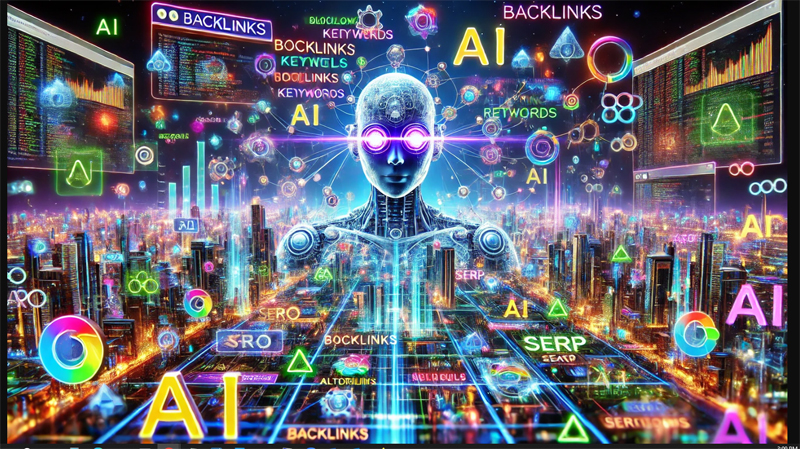2025 has seen the biggest shake-up in SEO since Google put Ask Jeeves and Infoseek out of business over 20 years ago. For the most part, it’s been a Google-only world ever since, where properly formatted content with a decent set of backlinks was the name of the game. I’d argue that very little has truly changed — even with Google’s core updates trying to make us all be more “helpful.” But those days are now gone, and there’s a serious threat to Google’s search monopoly.
What About Bing?
The official line is that Bing holds only a modest share of the market, but that seems like a load of BS when I look at our website’s log files. I occasionally get talked into paying attention to Bing — usually when I’m totally out of things to do for an SEO project, or when one of my test SEO sites isn’t performing well on Google, and I decide to see if I can rank on Bing instead. For commercial purposes, though, I still think it’s largely a waste of time.
Is AI Taking Market Share?
At this point, I think that’s pretty obvious. ChatGPT, among other tools, has become a better search engine in many ways. At first, I wasn’t using it as a pure search engine — and I definitely wasn’t using it to shop or find products online — but now I am. Google’s own AI systems are also beginning to disrupt the traditional SEO landscape. Tools such as SEMrush have become increasingly less accurate, and pure organic search results are being replaced not only by ChatGPT and Copilot but by Google’s own AI-driven responses.
The SEO Frontier in 2025: Why AI Isn’t Just a Tool — It’s the Landscape
Search engine optimization is undergoing one of its biggest shifts in a decade. What was once about tweaking meta tags and building backlinks has morphed into optimizing for conversations, synthesized answers, and agents that act autonomously. AI is no longer just supporting SEO — it’s reshaping what SEO means.
In this post, I’ll walk through the most important AI-driven trends transforming SEO today, what they mean for marketers and content creators, and how to adapt (rather than get left behind).
Key AI-Driven Trends You Can’t Ignore
1. AI Overviews & Answer Engines Dominate the SERP
Google’s AI Overviews (formerly part of its Search Generative Experience) are increasingly appearing at the top of search results, providing synthesized answers directly in the results page. Lumar+4Conductor+4WordStream+4
Because of that, many users never click further — this “zero-click” phenomenon is intensifying. 829 Studios+3SEO.com+3Conductor+3
As traffic becomes more captive to SERP-level responses, traditional metrics like click-through rate (CTR) and pageviews may shrink in relative importance.
2. Generative Engine Optimization (GEO / AIO / AEO)
To be visible in AI-generated answers, you need a new kind of optimization. Many in the industry now call this GEO (Generative Engine Optimization) or related terms like AIO (AI Optimization) or AEO (Answer Engine Optimization). arXiv+3Lumar+3Wikipedia+3
Key strategies here include:
- Structuring content for machine scannability (clear sections, semantic markup, logical flow)
- Earning third-party citations and links, since AI search systems tend to favor authoritative, external content sources over purely self-published pages arXiv+1
- Considering query paraphrases, context chaining, and follow-up intent, not just the primary keyword arXiv+2arXiv+2
In short: you don’t just want to rank — you want to be the answer.
3. AI Agents & Autonomous Interactions
Beyond just search, AI systems are evolving into agents that can perform tasks (book, compare, recommend) on behalf of users. arXiv+1
This means your content, site structure, schema, and APIs may need to support machine-driven flows, not just human-driven navigation. Some emerging research calls this Agentic AI Optimization (AAIO). arXiv
Think of it like this: instead of producing content for a human to click and read, you’re also aiming to feed it into systems that act — e.g. “Find me the cheapest hotel with these filters, book it.”
4. Decoupling of Impressions and Traffic
A new pattern is emerging: you might see your impressions or presence in SERPs increase, but your clicks / traffic decline. This is because AI overviews or synthesized answers are absorbing user queries before they ever reach your site. 829 Studios+3Mike Khorev – SEO Consultant+3Conductor+3
This “great decoupling” demands new success metrics: focus more on conversion yield, user engagement, micro-conversions embedded in content, brand lift, and how often you’re cited by AI systems — not just raw traffic.
5. First-hand Experience & E-E-A-T Take Center Stage
With AI making it easier to generate generic content, search systems (and human users) are putting more weight on authenticity. Google has expanded E-A-T (Expertise, Authoritativeness, Trustworthiness) to E-E-A-T, adding Experience as a signal. TheeDigital+2Coalition Technologies+2
What helps:
- Case studies, data-backed stories, real-world examples
- Detailed author credentials and bios
- Unique insights and perspectives not found elsewhere
In effect, content that just recycles what’s already out there is less likely to stand out in an AI-powered search world.
6. AI-Assisted Content & Hybrid Workflows
AI tools (e.g. for drafting, rewriting, summarization, metadata, internal linking) are becoming more integrated into SEO workflows. sqli.com+3HubSpot Blog+3Salesforce+3
The “content + human polish” model is gaining traction: use AI to handle repetitive, structural tasks, then apply human insight to ensure quality, depth, context, and alignment with brand voice.
7. Technical SEO Still Matters — But Smarter
Performance, site architecture, schema, and crawlability remain essential — perhaps even more so as AI systems weigh freshness, loading speed, structured data, and responsiveness. Coalition Technologies+4TheeDigital+4sqli.com+4
In addition, signals like internal linking, content freshness, and canonicalization around versions optimized for AI flows are becoming nuanced levers.
8. Diversification — Don’t Rely on Google Alone
Because search is fragmenting across AI platforms (ChatGPT, Perplexity, Gemini, Claude, etc.), putting all your eggs in Google’s basket is risky. Conductor+3Exploding Topics+3Lumar+3
Also, your brand and content get “picked” by AI systems based on how relevant, authoritative, and machine-readable you appear. That means cross-channel presence, strategic partnerships, and content “signals” beyond just site optimization.
What This Means for Your AI SEO Strategy: A Checklist
| Strategic Focus | Action Items |
|---|---|
| Aim to be an answer, not just ranked | Format content for quick extraction (questions/answers, bullet summaries, clear structure) |
| Be cited & trusted | Earn backlinks, third-party mentions, thought leadership |
| Use AI Smartly | Let AI help with drafts, metadata, internal linking — but always human-edit |
| Track new metrics | Monitor how often your content is surfaced to AI systems, conversion rate, dwell time |
| Optimize for agents | Think of flows where AI may interact with your site — e.g. APIs, structured data, content modularity |
| Strengthen E-E-A-T | Share your real experience, author credentials, unique insights |
| Stay technically sharp | Fast loading, correct schema, proper canonicalization, mobile-first, internal linking |
| Stay platform-agnostic | Create content formats that can be consumed across AI systems (text, data, visual) |





